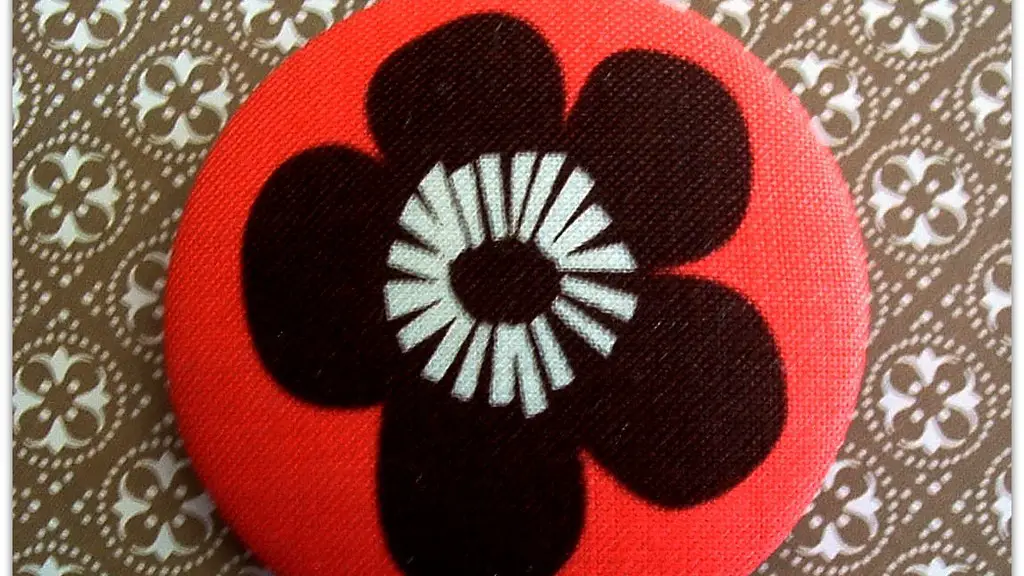Background Information
A sewing machine is a device used to stitch fabric and materials together with thread. It is an invaluable tool for any person who enjoys sewing. It saves time and energy when various materials are to be joined together quickly, accurately, and securely. It is important for the seamstress to understand the basics of sewing machine operation, such as how to adjust the tension on the machine. The tension is the amount of pressure applied to the threads as they pass through the material. If the tension is not set properly, the stitches will be less secure, the fabric will not lay properly, and the stitches may even unravel. This can be a serious problem and is why understanding how to adjust the tension is so crucial.
What is the Role of Tension?
The role of tension is to maintain an even distribution of pressure across the material, threads, and stitches, ensuring a secure and stable seam. The adjustment of the tension should be done before the start of any sewing work, as this is the first step to creating a secure and robust seam. Different thread weights, fabrics, and types of seams require a different tension setting.
How to Adjust Tension?
Once you determine what the tension setting should be for the current sewing project, the tension can be adjusted with the help of a tension dial. This is usually located on the front of the machine, near the top. The dial is marked with numbers from 0 to 9, with the number 0 being the loosest tension and the number 9 being the tightest. To adjust the tension, you should raise the presser foot and turn the tension knob until the number that you need is indicated on the dial. Once the desired tension is achieved, you can lower the presser foot and begin sewing.
How Does the Pressure Adjuster Work?
For most standard machines, the tension regulator is just a simple knob. It works by adjusting the tension disks, which in turn apply more or less tension to the threads. The disks pull on the threads, either loosening or tightening them, thus changing the tension of the threads as they pass through the fabric. The disks are usually made of metal and can be finely adjusted to give the right amount of tension.
Signs that the Tension is Wrong
If the tension is too tight, the stitches may pucker the fabric and the thread will break more frequently. If the tension is too loose, the fabric may be full of loops and the seam may unravel easily. Excessively loose or tight tension can also cause the machine to jam. Additionally, if the fabric being sewn is not properly held in place, either by not using enough pins or not using the correct stitching speed, it can also create tension problems.
What Are the Factors to Consider Before Adjusting?
When adjusting tension, there are several factors that must be taken into consideration, such as the type of fabric being used and the type of seam being sewn. Different fabrics require different levels of tension, as thinner fabrics need more tension while thicker fabrics need less tension. Additionally, different seams require different levels of tension, as seams such as French seams require tighter tension than seams such as lockstitch seams.
Testing the Tension
Once you have determined the correct settings and adjusted the tension accordingly, it is a good idea to do a test seam to make sure that everything is working properly. Sew a few inches of the seam and carefully inspect the stitches. If the stitches look even, then you have successfully adjusted the tension. If the stitches are still uneven or have loops, then the tension needs to be adjusted again until the stitches look even.
Tools to Adjust Tension
There are a few tools on the market that can help with adjusting tension. These include tension testing tools, which measure the tension of the yarn in the fabric. This is done by measuring the distance between the stitches. Tension testing tools can provide the correct tension settings quickly and accurately, making it easier to adjust the tension.
Techniques to Improve the Quality of Seams
Aside from adjusting the tension, there are a few other techniques that can be used to ensure good seam quality. The most important of these is to use a quality thread and use good quality needles. Additionally, it is important to use the right stitch length and presser foot pressure, as well as choosing the correct stitch type and thread weight for the fabric being used. Following these tips can help ensure that you create the best seams possible and avoid the need to adjust tension.
Conclusion
Adjusting the tension of the sewing machine is a crucial step to creating secure and strong seams. It is important to understand the role of tension and how to adjust it correctly. Additionally, it is important to consider the type of fabric and seam being used, as this can influence the tension setting. There are also a few tools and techniques that can be used to improve the quality of seams. With the right knowledge and tools, the perfect tension can be achieved – ensuring beautiful seams every time.


